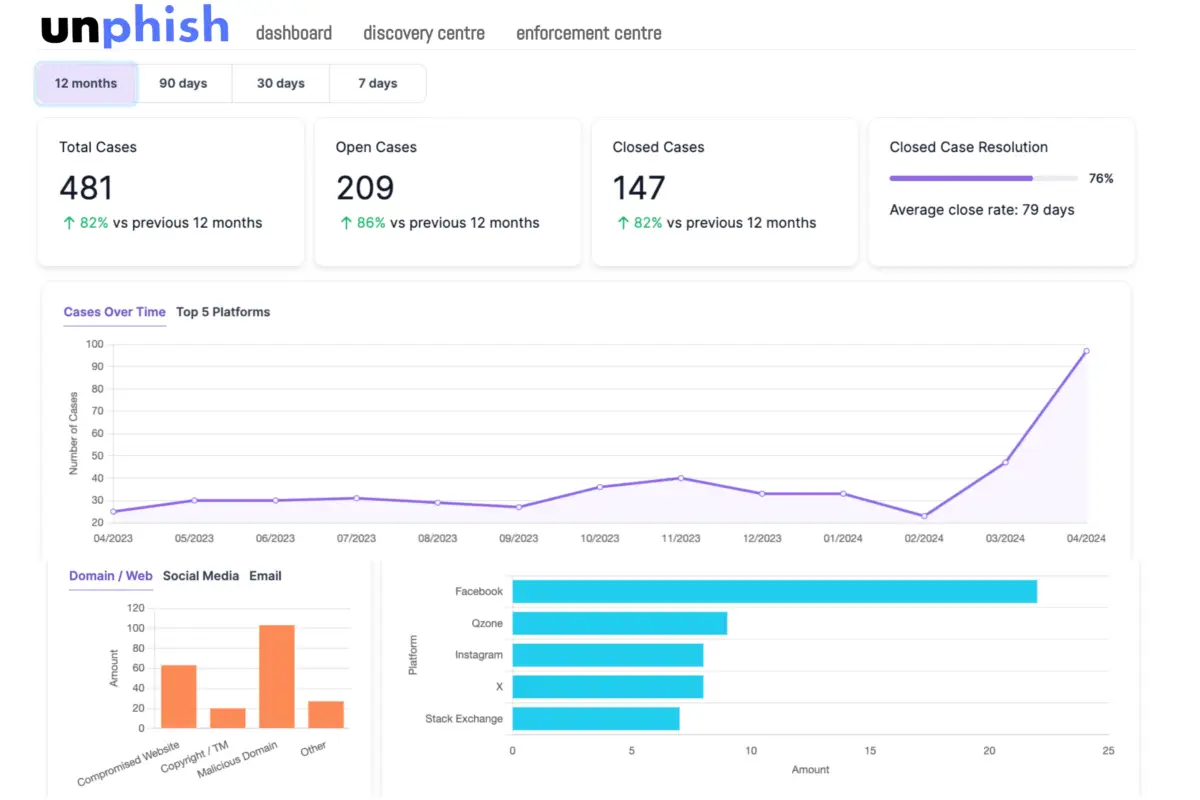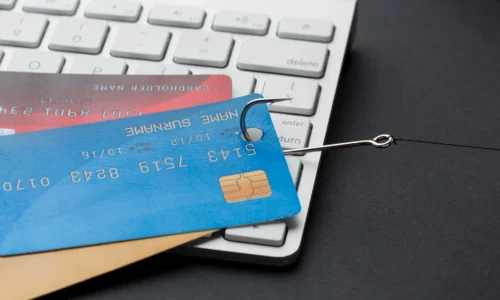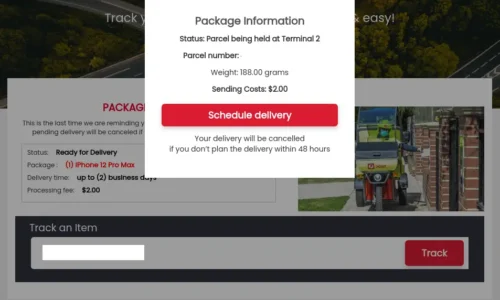

Tips to Protect Your Brand from Web-Based Phishing Attacks
Web-based phishing is one of the fastest-growing threats facing enterprises today. Criminals can launch convincing fake websites in hours, using your brand identity to steal customer credentials, harvest payment data, and damage trust.
In Q4 2024 alone, nearly 1 million phishing attacks, many involving fraudulent websites, were recorded, up from 933,000 in Q3. During Q1 2024, APWG logged 358,000 unique phishing websites in January alone, representing the sheer volume and speed at which fraudulent domains are deployed.
For Australian CIOs and CISOs, the challenge isn’t just detecting these threats – it’s stopping them before they cause harm. Australian workers are clicking on dodgy phishing attacks roughly twice as often as the global average. A Netskope research report found that 5 in every 1000 people click on a phish link each month, well ahead of the global average of 2.9 per thousand. This puts both the brands and their customers at significant risk, and means that for most Australian brands, targeted web based phishing attacks are a matter of when, not if. Here are five practical, actionable steps to protect your organisation from web-based phishing attacks.
"For Australian CIOs and CISOs, the challenge isn’t just detecting these threats... Australian workers are clicking on dodgy phishing attacks roughly twice as often as the global average.. 5 in every 1000 people click on a phish link each month, well ahead of the global average of 2.9 per thousand"
NETSKOPE
1. Monitor for Suspicious Domains Daily

Domain name monitoring is the phishing protection starter pack. Almost 70% of phishing websites use domain names that impersonate a target brand. Domain name monitoring is an affordable, yet highly effective way to quickly detect and remove web-based phishing attacks.
Domain name monitoring allows brands to:
- Track exact matches, typosquats, and homoglyph variations.
- Monitor across multiple TLDs and ccTLDs (.com, .nz, .cn, .co, .au, etc.).
- Include high-risk extensions often used in scams, such as .top, .xyz, or .shop.
- Track parked domain names for content resolution at a later date.
By implementing a domain name monitoring tool that scan daily for suspicious activity, you can identify threats before they are weaponised, enabling rapid phishing prevention and takedown actions that safeguard your customers, revenue, and reputation.
2. Continuously Track Brand Misuse Across the Web
When targeting a brand, bad actors will often launch coordinated campaigns across the web, social media, email, and mobile apps. They spin up deceptive landing pages, run fraudulent ads, and in some cases, build complex redirect networks with hundreds of branded and unbranded domains. An effective brand protection program uncovers the entire fraud chain and should, at a minimum, include the following elements:
- Web-based phishing protection and online brand protection require monitoring beyond domain registrations looking for content, images, meta data and bad neighbourhoods for infringements.
- Scans of search engines and fake ads for campaigns misusing your brand name to lure customers.
- Detection and removal of fake mobile apps mimicking your services on official and third-party app stores.
- Monitoring of social media platforms for impersonation accounts, scam ads, and phishing links.
- Image-recognition technology to detect websites replicating your logos, product imagery, and other visual identity markers.
- Structure investigation of suspicious redirects and compromised legitimate sites hosting phishing content without the owner’s knowledge.
Extending brand monitoring beyond domain names allows you to see the entire fraud supply chain, not just the individual phishing websites as they appear. This broader view enables you to identify linked infrastructure, map the attack network, and take action against the source, disrupting the operation instead of chasing down each new site one by one.
3. Be Takedown Ready
When a phishing website is live, speed is critical. Cyber security teams need a structured, phishing takedown process that’s ready to deploy the moment a threat is confirmed. A takedown-ready approach includes:
- Pre-approved enforcement templates containing legal proof of trademark or brand ownership, ensuring takedown requests meet registrar and host requirements.
- A centralised contact list of verified registrar, hosting provider, and platform escalation contacts so there’s no delay in finding the right decision-maker. We recommend mapping our these processes, escalation and contacts within these organisation who may help.
- Integration with your online brand protection tools so identified threats can be escalated into enforcement workflows automatically.
The time it takes to remove a phishing property can be affected by external factors such as the registrar or hosting provider involved. However, early detection and rapid reporting significantly reduce overall takedown time. Platforms tend to respond quicker to newly established phishing sites, compared to those that have been active for some time. When paired with domain monitoring and automated alerting, a takedown-ready process ensures you can neutralise threats before they cause real damage.
4. Secure Your Domains and DNS Infrastructure
We need to talk about the internal threat as well. There is no point implementing sophisticated monitoring and takedown systems if you haven’t locked down your own environment. If a bad actor can compromise your domain name or DNS the impact can be massive. DNS hijacking and subdomain takeovers are more common than many realise. If it happens to you, attackers effectively gain the keys to your IT infrastructure, allowing them to alter DNS records and redirect visitors to fraudulent sites, or anywhere they choose. Even users typing your correct domain can be deceived, making protection against DNS manipulation essential for effective web-based phishing protection and brand protection.
To ensure that your domain names or DNS are never used against you:
- Deploy Registry Lock and DNSSEC for critical domains.
- Enforce multi-factor authentication for all registrar and hosting accounts.
- Register and park high-risk domains to block third-party abuse.
- Think twice before letting a domain name expire, especially one that’s been active in the past.
- Secure your DNS records by regularly auditing your zone file and removing any unused or orphaned entries to prevent subdomain takeover.
By securing your domain assets and maintaining strict DNS controls, you remove one of the most damaging tools available to attackers. This not only protects customers but also strengthens your credibility when pursuing enforcement against external threats.

5. Maintain and Test a Phishing Incident Playbook
Incident readiness is just as important as detection. Even with strong web-based phishing protection measures in place, your response time and execution determine how much damage a phishing attack can cause. A phishing incident playbook gives your team a clear, repeatable process for identifying, validating, and neutralising threats.
An effective playbook should:
- Define each step in the process… from detection and validation to escalation, enforcement, and communications.
- Map internal escalation paths for quick decision-making, and external escalation paths for registrar, host, platform, and law enforcement.
- Detail the phishing takedown workflow, including evidence gathering and reporting templates.
- Run regular simulations that mimic real-world phishing scenarios to measure speed and accuracy under pressure.
Phishing attacks are evolving at speed, using sophisticated tactics, experimenting with new platforms, and automating their attacks against target brands. For CIOs and CISOs, success lies in a structured, layered approach: monitor relentlessly, respond fast, secure your assets, and test your readiness. With Brandsec’s Unphish platform, you gain the automation, intelligence, and enforcement capabilities needed to stay ahead of attackers and protect your customers, revenue, and reputation.

Detect & Remove Phishing Content Quickly and Effortlessly with Unphish
A phishing and brand protection solution built for businesses that value their reputation, customers, and brand.
About brandsec
brandsec is a team of highly experienced domain name management and online brand protection experts. We provide corporate domain name management and brand enforcement services, helping brands eliminate phishing platforms across the internet. Supporting some of the largest brands in the region, we offer innovative solutions to combat threats across multiple industries.

Edward Seaford
Product & Enforcement Director
Ed brings over two decades of experience in domain management, brand protection, and phishing defence. At Brandsec and Unphish, he drives the technology and partnerships while leading with a people-first approach.



